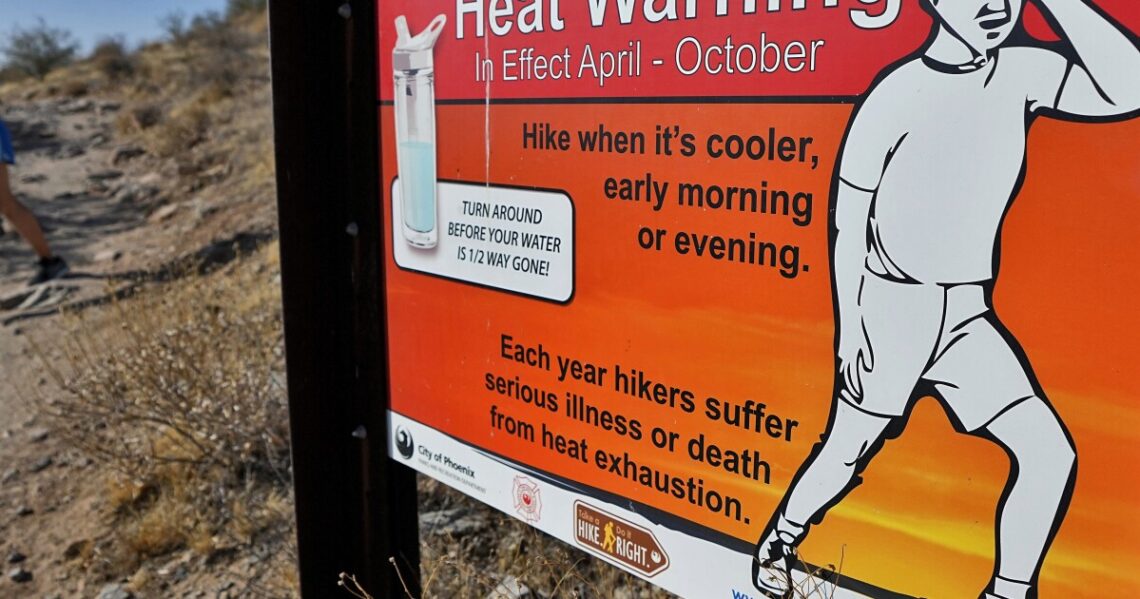A child collapses and later succumbs to the heat after hiking in scorching temperatures on a Phoenix trail. A couple runs out of water near California’s Joshua National Park and are airlifted from a dry creek bed. Three hikers die at the Grand Canyon in less than a month amid extreme heat.
A stifling heat wave in the Western U.S. has turned some of its most alluring nature trails deadly. Here’s why hiking in extreme heat can be so dangerous and how to keep yourself safe.
The dangers
Heat records have been crumbling this summer in the U.S., creating dangerous conditions for those exerting themselves outside. The U.S. is warming up at a faster rate than the global average. Already this summer Palm Springs, Calif., set an all-time record high of 124, Reno, Nev., saw a record four days of 105-plus heat while parts of Oregon baked through temperatures of 110.
When the body gets overheated, it struggles to perform basic functions.
“It would be similar with somebody having a really bad stomach flu where your body is basically revolting against you,” says Phoenix Fire Capt. Rod McDade. “And what happens is, as the body starts to go into a protection mode, it starts shunting everything in to protect the core.”
Heatstroke signs include hot, red, dry or damp skin, a fast strong pulse, headache, dizziness, nausea and confusion. Things can get really dangerous when people ignore them.
“The signs and symptoms are there. Their body is telling them, I can’t continue, and yet they continue because they don’t believe it’s a successful hike until they get to the top of the mountain,” says McDade. “And that’s when we run into problem.”
Read the full article here







